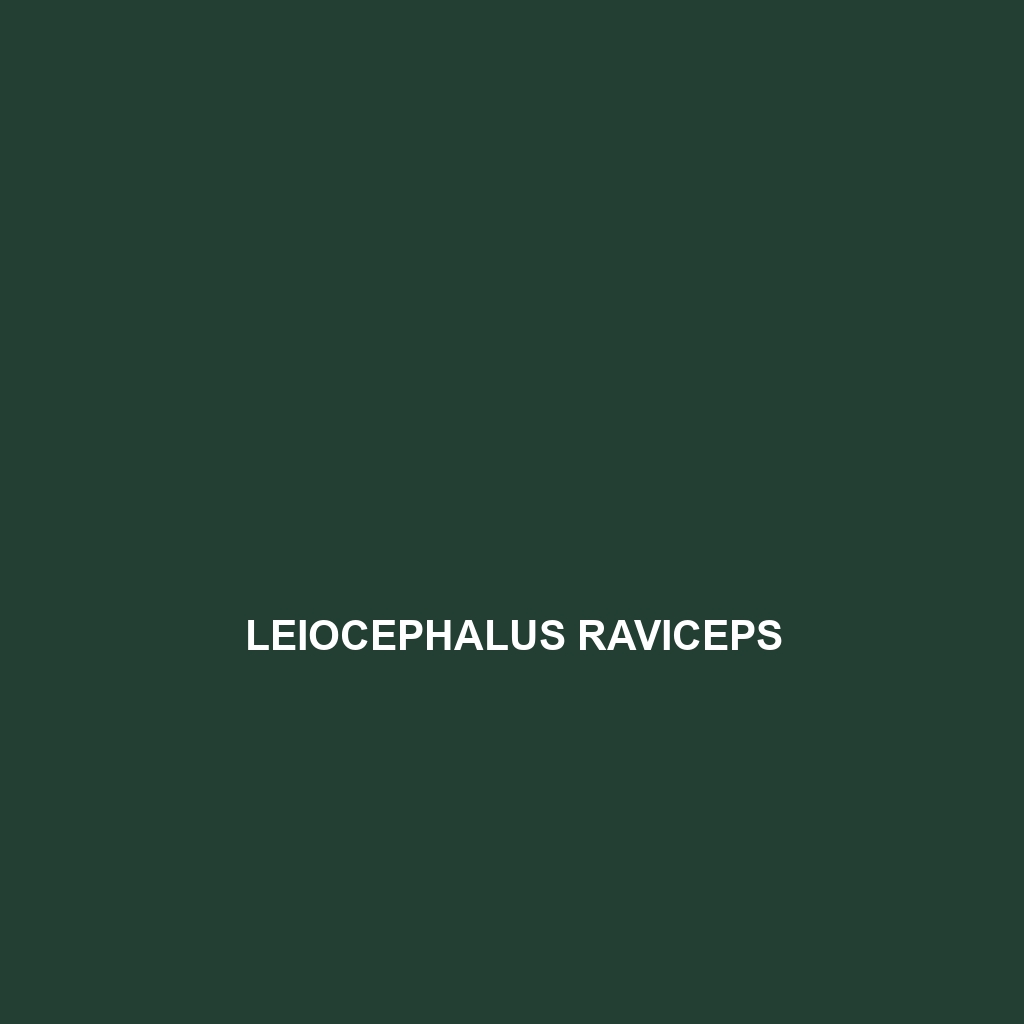Common Name
Leiocephalus punctatus
Scientific Name
Leiocephalus punctatus
Habitat
Leiocephalus punctatus, commonly known as the spotted curlytail lizard, is primarily found in a variety of habitats across the Caribbean, especially in the Bahama Islands and parts of Florida. These lizards thrive in diverse environments ranging from tropical rainforests to drier savannas. They are commonly seen in coastal regions and marine habitats, often inhabiting areas near sandy beaches where they can burrow and bask in the sun. The climate of these regions features warm temperatures and seasonal rainfall, which are conducive to the growth of vegetation that serves as a critical component of their habitat.
Physical Characteristics
Leiocephalus punctatus is a medium-sized lizard, typically measuring between 25 to 30 centimeters in length from head to tail. It has a distinctive elongated body, which is often golden-brown in color with darker spots, which may vary in intensity among individuals. One unique feature of this species is its flattened, curly tail that gives rise to its common name. The skin is covered in small, smooth scales that offer a sleek appearance and aid in regulating body temperature. Additionally, this species possesses large, prominent eyes that enhance its vision, crucial for spotting predators and prey.
Behavior
Typical behaviors observed in Leiocephalus punctatus include rapid and agile movement, particularly during the day when they are most active. They are predominantly diurnal, meaning they thrive in the daylight hours. Their social interactions can be quite complex; males often engage in territorial displays, exhibiting aggressive postures to ward off rivals. Mating rituals are also noteworthy, as males may perform elaborate courtship behaviors that involve head bobbing and push-ups to attract females. Interestingly, they can exhibit some nocturnal behavior during warmer seasons, seeking cooler ground cover at night.
Diet
Leiocephalus punctatus is classified as an insectivore, predominantly feeding on a diet of insects such as ants, beetles, and grasshoppers. However, they also consume small plant materials, making them omnivorous in practice. Their feeding patterns are opportunistic, allowing them to adapt based on the availability of food sources in their environment. They are known for their quick reflexes when capturing prey, which they do with a snap of their jaws.
Reproduction
The reproductive cycle of Leiocephalus punctatus is closely linked to the warm climate of its habitats. The mating season typically occurs in the spring, with males displaying their prowess in various courtship behaviors to attract females. After mating, the gestation period lasts approximately 4 to 6 weeks before the female lays a clutch of 2 to 8 eggs. The nests are usually constructed in sandy soil or hidden among vegetation, providing protection from predators. Maternal care is limited, as the female does not guard the eggs after laying, leaving them to hatch independently, usually about two months later.
Conservation Status
The conservation status of Leiocephalus punctatus is currently listed as Least Concern according to the International Union for Conservation of Nature (IUCN). However, habitat destruction due to urban development and climate change poses potential threats to their populations. Nonetheless, there are no immediate and significant conservation efforts specifically targeting this species, but maintaining healthy ecosystems in their natural habitats is crucial for their continued survival.
Interesting Facts
One of the most interesting aspects of Leiocephalus punctatus is its ability to adapt to varying environmental conditions, which allows it to thrive in different habitats. In addition to their unique curled tails, these lizards can exhibit remarkable sprinting abilities, allowing them to evade predators with ease. Another fascinating fact is their color-changing ability; while their base color remains consistent, their spots can become more pronounced in response to environmental stressors or changes in mood.
Role in Ecosystem
Leiocephalus punctatus plays a vital role in its ecosystem as both predator and prey. By maintaining insect populations, they contribute to the balance of the food web, helping to control pest species that could otherwise dominate their environments. Additionally, as prey for birds and larger reptiles, they serve as an important nutritional resource within their habitat. Understanding the ecological role of this lizard contributes to a broader knowledge base about the health of Caribbean ecosystems, underscoring the importance of biodiversity in preserving ecological stability.
